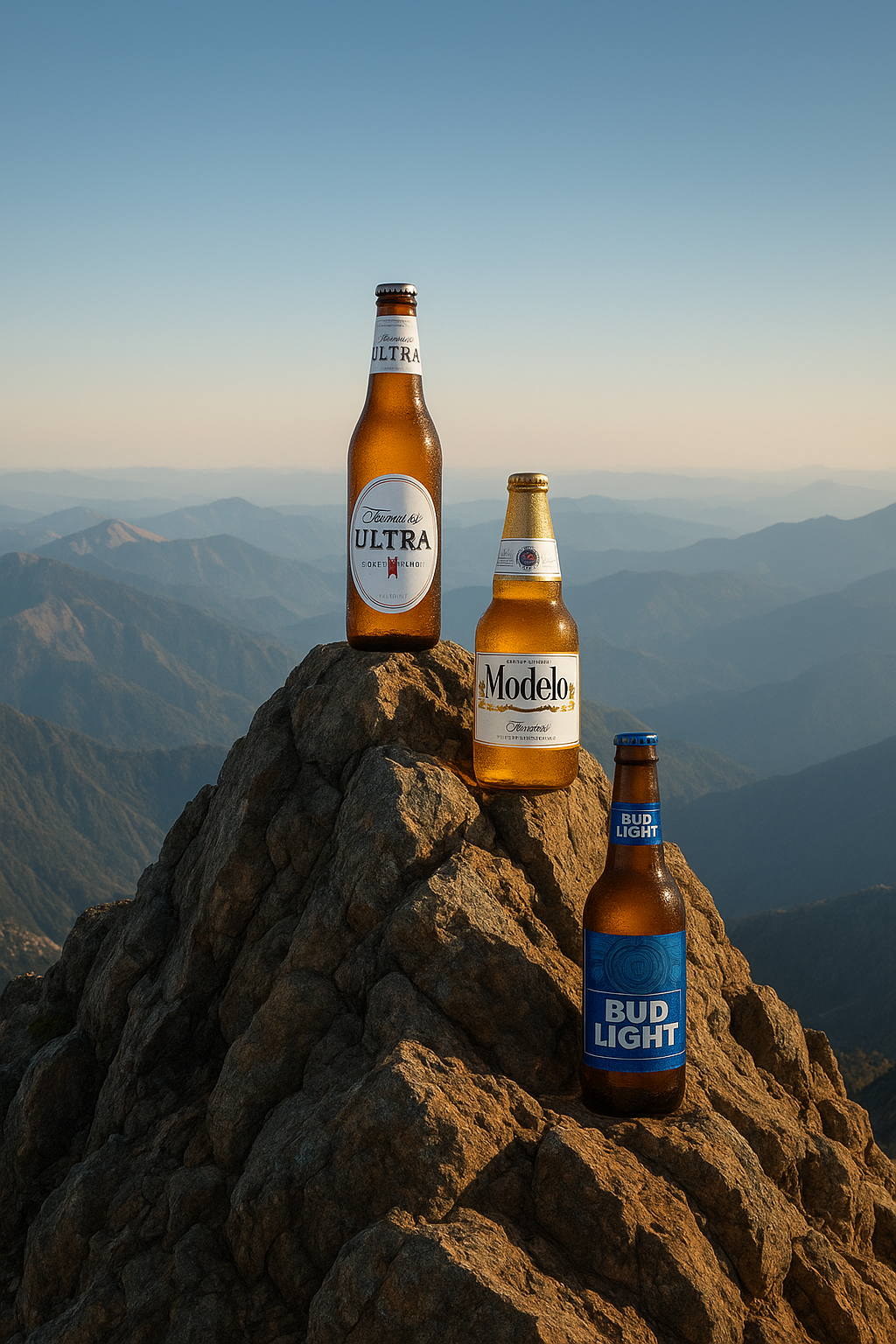
For decades, Bud Light reigned supreme as America’s best-selling beer, a symbol of mainstream appeal and marketing dominance. But in a dramatic shift, Modelo Especial surged past Bud Light in 2023, only to be overtaken again by Michelob Ultra in 2025. This evolution in consumer preference reflects more than just taste—it’s a story of brand building, cultural resonance, and strategic pivots in a competitive marketplace.
🍺 Bud Light’s Two-Decade Reign: The Power of Mass Appeal
Bud Light’s dominance began in the early 1980s and solidified through the 1990s and 2000s. As a light lager with a crisp, approachable flavor profile, it appealed to a broad demographic—from college students to blue-collar workers to suburban families. But its success wasn’t just about the beer—it was about the brand.
- Massive Advertising Spend: Bud Light’s Super Bowl commercials became cultural touchstones. From the “Real Men of Genius” campaign to the “Dilly Dilly” era, Anheuser-Busch mastered the art of memorable, humorous storytelling.
- Sports Sponsorships: Bud Light was omnipresent in NFL stadiums, college football tailgates, and NASCAR events.
- Distribution Power: As part of Anheuser-Busch InBev, Bud Light benefited from unmatched distribution networks.
- Brand Extensions: Innovations like Bud Light Lime and Bud Light Platinum kept the brand fresh and relevant.
⚡ The Fall of a Giant: Backlash and Brand Identity Crisis
In 2023, Bud Light faced a cultural firestorm. A brief partnership with transgender influencer Dylan Mulvaney sparked backlash among conservative consumers, leading to boycotts and a sharp decline in sales. While the campaign was intended to signal inclusivity, it exposed the brand’s vulnerability in a polarized environment.
- Loss of Core Consumers: Many longtime Bud Light drinkers felt alienated.
- Social Media Amplification: The backlash was magnified online.
- Retail Impact: Sales plummeted, and shelf space began to shift toward competitors.
As a former CFO and strategic leader, Thomas McCorry notes, “Brand equity is fragile. When a brand loses clarity about its identity, especially in a politically charged climate, the fallout can be swift and unforgiving.”
🇲🇽 Modelo’s Meteoric Rise: Cultural Resonance and Strategic Positioning
Modelo Especial, brewed by Constellation Brands in the U.S., capitalized on Bud Light’s stumble. But its rise wasn’t accidental—it was the result of years of strategic brand building.
- Authenticity and Heritage: Modelo’s Mexican roots gave it a distinct identity.
- Appeal to Hispanic Consumers: With Hispanic Americans representing a growing share of beer drinkers, Modelo resonated deeply.
- Premium Positioning: Modelo was priced slightly higher than Bud Light, signaling quality.
- Effective Advertising: Campaigns like “Fighting Spirit” highlighted resilience and grit.
In 2023, Modelo overtook Bud Light to become the best-selling beer in the U.S.—a symbolic moment for the industry.
🌍 Demographic Shifts and the Rise of Premium Imports
- Hispanic Population Growth: Hispanic Americans now make up nearly 20% of the U.S. population.
- Health-Conscious Consumers: Younger drinkers focus on wellness and moderation.
- Decline of Traditional Light Beer: Legacy brands have struggled to maintain relevance.
Thomas McCorry observes, “The beer market is no longer monolithic. Success depends on understanding nuanced consumer segments and delivering authentic, differentiated experiences.”
🏃 Michelob Ultra’s Quiet Climb to the Top
While Modelo basked in the spotlight, Michelob Ultra was quietly building momentum. In 2025, it overtook Modelo to become America’s best-selling beer.
- Health Halo: With just 95 calories and 2.6 carbs, Ultra positioned itself as the beer for active lifestyles.
- Broad Appeal: Ultra’s branding was inclusive and aspirational.
- Pricing Advantage: A case of Ultra sells for about $7 less than Modelo.
- Innovation: Products like Ultra Pure Gold and Ultra Zero expanded reach.
- Sponsorships: Ultra secured major deals with the Olympics and FIFA World Cup.
📉 Modelo’s Decline: Shifting Loyalty and Economic Sensitivity
Despite its strong brand, Modelo faced headwinds in 2025:
- Weaker Hispanic Demand: Economic challenges impacted spending among key consumers.
- Retail Dynamics: As Ultra gained volume, retailers adjusted shelf space and promotions.
Constellation Brands cut its sales forecast, and Modelo’s momentum stalled. Michelob Ultra surged ahead.
🔍 Lessons in Brand Building: What the Beer Wars Teach Us
- Know Your Core Audience: Bud Light’s misstep stemmed from a disconnect with its base.
- Adapt to Cultural Shifts: Modelo embraced Hispanic identity; Ultra aligned with wellness.
- Avoid Polarization: Ultra’s neutral messaging broadened appeal.
- Innovate Without Alienating: Ultra’s product extensions felt authentic.
- Leverage Strategic Sponsorships: Smart partnerships build credibility and visibility.
🧠 Strategic Reflections from Thomas McCorry
As someone who led financial strategy for Constellation Brands’ beer division, Thomas McCorry offers a unique perspective:
“The beer category is dynamic, and loyalty is earned daily. Success requires not just great liquid, but great storytelling, cultural relevance, and operational excellence. The brands that win are those that listen, adapt, and lead with purpose.”
📈 What’s Next for America’s Beer Market?
- Growth of Non-Alcoholic Options: Ultra Zero’s success signals rising demand for moderation.
- Premiumization: Consumers are willing to pay more for quality and health benefits.
- Digital Engagement: Social media and influencer partnerships will shape brand narratives.
- Diversity and Inclusion: Brands must reflect the values of a diverse consumer base.
🏁 Final Thoughts
The journey from Bud Light to Modelo to Michelob Ultra reveals the power of branding, the impact of cultural shifts, and the importance of strategic agility. In a crowded marketplace, the winners are those who evolve with their consumers, stay true to their identity, and lead with purpose.
As Thomas McCorry reflects, “Brand leadership isn’t about being everything to everyone. It’s about being the right thing to the right people—and doing it consistently, authentically, and boldly.”